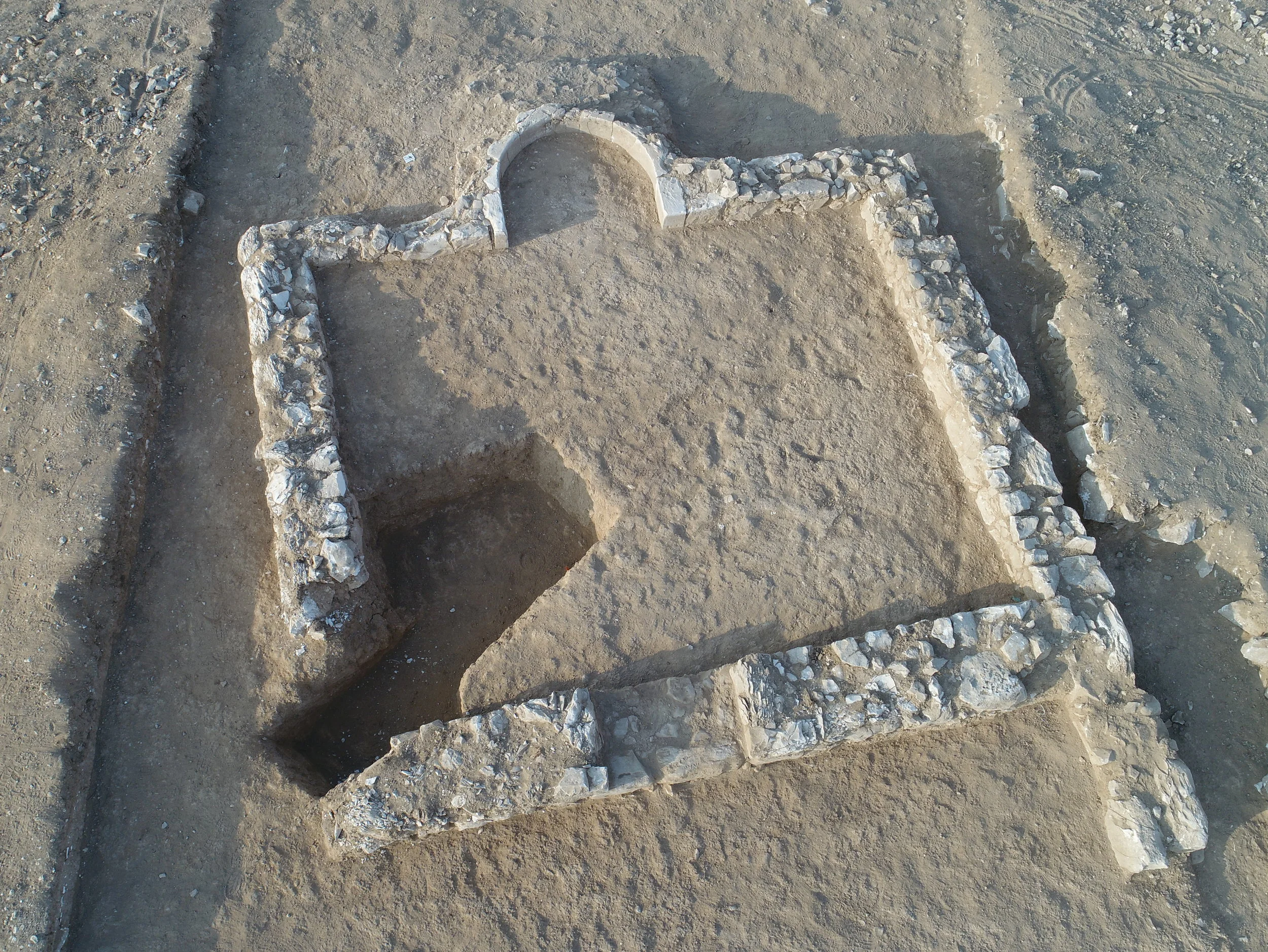Israel Antiquities Authority discovers one of earliest mosques since the 636 C.E. Arab conquest.
In preparation for building a new neighborhood in the Negev town of Rahat, the Israel Antiquities Authority (IAA) discovered an ancient Mosque dating to the 7th and 8th centuries C.E. According to the IAA’s Prof. Gideon Avni, who is an expert in Early Islamic Archaeology, “this is one of the earliest mosques known from the beginning of the arrival of Islam in Israel, after the Arab conquest of 636 C.E..” The rectangular building features a “mihrab,” or prayer niche, facing south towards Mecca. This distinctive architectural feature confirms the building’s purpose as a mosque.
The Mosque. Photo: Emil Aladjem, Israel Antiquities Authority.
The mosque is a rare discovery not only because of its age, but also its rural location. Dr. Jon Seligman and Shahar Zur, directors of the excavations for the IAA, say that "A small rural mosque, dated to the 7th to 8th centuries C.E., is a rare finding anywhere in the world, especially in the area north of Be'er Sheva where no similar building has previously been discovered.” Large mosques from this early Islamic period are know in cities like Mecca and Jerusalem, “but here,” Seligman and Zur continue, “we have evidence of an ancient house of prayer, which seems to have served the farmers who lived in the area.”
Excavations nearby the mosque confirmed this, revealing a small settlement from the beginning of the Islamic period (7th – 8th Century C.E.). Buildings divided into living rooms, open courtyards and storage spaces were uncovered, as well as areas for preparing food, complete with tabbuns (open-air clay ovens) used for baking bread. According to the Excavation directors, this area had perennial streams and soil suitable for cultivating grains. These features drew settlers, and this settlement became part of the ancient Negev’s northern agricultural structure.
The Mosque. Photo: Emil Aladjem, Israel Antiquities Authority.
Prof. Avni expounds on this concept saying, “The discovery of a mosque near an agricultural settlement between Be'er Sheva and Ashkelon also indicates the processes of cultural and religious change which the country underwent during the transition from the Byzantine to the early Islamic period… According to historical Islamic sources, the new Islamic regime distributed plots of land to its senior officials, including Amr ibn al-'As, an Arab military commander who conquered Israel and Syria.” Prof. Avni hopes that as excavations continue questions about the mosque settlement’s founding, and what connection it had to the Arab conquerors.
The excavation was carried out in collaboration with Bedouin residents of the area, as well as youth from the local villages and towns. This was part of the Legacy Project led by the IAA in recent years, which opens the doors for organized youth groups to help with the excavations during the summer vacation. The projects encourages youth to learn about their past while earning a fair wage and gaining experiences that will last a lifetime. The excavation was financed by the Authority for Development and Settlement of the Bedouins in the Negev, and the Emek Ayalon Infrastructure & Projects Management Ltd (2000). Currently, the Authority for Development and Settlement of the Bedouins in the Negev and the IAA are examining possible ways to integrate this special discovery into the new neighborhood which is about to be built in the city.
Youth participating in the excavation. Photo: Anat Rasiuk, Israel Antiquities Authority.




